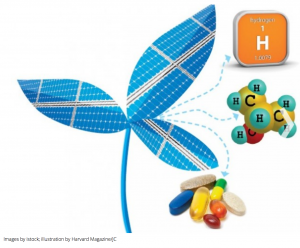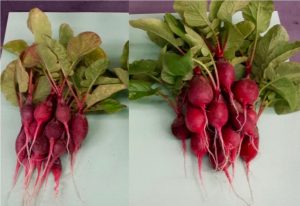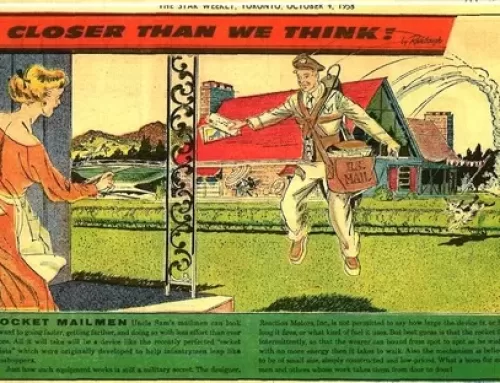 Perhaps you may remember and was a fan of the 1970s-television series The Six Million Dollar Man, in which actor Lee Majors plays Colonel Steve Austin, an astronaut turned cyborg-like superhuman following a catastrophic accident, who uses his nuclear-powered bionic limbs and implants on behalf of the US government to battle evil for the good of mankind. As the rebuilt “bionic man” embodying costly new technology (back then) that made him “better, stronger and faster than he was before”, Colonel Austin was the unsuspecting hero who always saved the day. Fast forward 40 years into the future, to the 2010s, when it may delight you to learn that the once fantastical made-for-entertainment realm of bionics has been turned into real-life practical solutions for the developing world, with the creation of an artificial “bionic leaf”.
Perhaps you may remember and was a fan of the 1970s-television series The Six Million Dollar Man, in which actor Lee Majors plays Colonel Steve Austin, an astronaut turned cyborg-like superhuman following a catastrophic accident, who uses his nuclear-powered bionic limbs and implants on behalf of the US government to battle evil for the good of mankind. As the rebuilt “bionic man” embodying costly new technology (back then) that made him “better, stronger and faster than he was before”, Colonel Austin was the unsuspecting hero who always saved the day. Fast forward 40 years into the future, to the 2010s, when it may delight you to learn that the once fantastical made-for-entertainment realm of bionics has been turned into real-life practical solutions for the developing world, with the creation of an artificial “bionic leaf”.
The initial inception of the artificial leaf—dubbed “bionic” because it is a biological system interfaced with an inorganic catalyst—by Harvard Scientists in 2011 was for application in the energy sector in its use as a biomanufactured system that converts solar energy into liquid fuel and electricity. The more recent focus of the Harvard scientists relative to the next generation bionic leaf is its prospective application in the agricultural sector in its use for making fertilizer. Ongoing and evolving technological development of the bionic leaf and its multi-application use has thought-provoking implications for forest futures.
As an efficient energy-producing fuel source, the artificial leaf, comprised of a photovoltaic cell sandwiched in between two thin metal oxide catalysts, mimics photosynthesis in that it absorbs sunlight to produce a chemical reaction that splits water into oxygen and hydrogen gas. The artificial leaf paved the way for development of the bionic leaf, which joins the “water-splitting catalyst” with a metabolically engineered bacterium called Ralstonia eutropha that consumes hydrogen and takes in carbon dioxide to produce a versatile liquid hydrogen fuel. The bionic leaf stores the liquid fuel, and has potential use in fuel cells. In these applications, the bionic leaf proved to be a low-cost, “portable renewable chemical synthesis platform“ with even wider applications.
In a later application involving the production of fertilizer, the bionic leaf was designed to use a different type of bacteria, Xanthobacter, which consumes the hydrogen produced by the leaf, while also taking in carbon dioxide from the air to create a bioplastic. The bacteria stores the bioplastic as fuel and uses it to produce ammonia, “a nitrogen-hydrogen compound that forms the basis of fertilizer”.
 In soil, this bionic invention pulls nitrogen from the air and uses the bioplastic to “drive the fixation cycle to make ammonia for fertilizing crops.” The effectiveness of this technology is evidenced by five crop cycles of radishes that weighed 150 percent more than a control group of radishes—an indication of its super-efficiency and promise for farmers in developing countries, who could use the bionic leaf to produce fertilizer that improves crop yields.
In soil, this bionic invention pulls nitrogen from the air and uses the bioplastic to “drive the fixation cycle to make ammonia for fertilizing crops.” The effectiveness of this technology is evidenced by five crop cycles of radishes that weighed 150 percent more than a control group of radishes—an indication of its super-efficiency and promise for farmers in developing countries, who could use the bionic leaf to produce fertilizer that improves crop yields.
Ongoing research involving scaled-up experiments for the production of carbon neutral fuels point to future application of the bionic leaf for mitigating climate change.
For fans of the super-efficient bionic leaf, it’s no stretch of the imagination that it could be adapted for application to forests, which certainly raises two thought-provoking questions and implications for consideration.
- First, could/should this technology be adapted by forest services and used to produce carbon-neutral fertilizing biomass? An implication for its use in this way are trees that grow better and stronger and possibly at much faster growth cycles than its non-use.
- Second, would forests filled with trees grown using bionic leaf technology be more sustainably equipped for mitigating climate change? The implication in this respect is the need for long-term research, beginning now, with specific application of this technology to forest trees.
Perhaps the bionic leaf might just prove to be an unsuspecting “real” hero for forest services, and save the day for the good of all mankind. — Kimberly Daniel
(image 1 source: http://harvardmagazine.com/2015/05/the-bionic-leaf)
(image 2 source: Nocera Lab, Harvard University, http://newatlas.com/bionic-leaf-fertilizer/48766/)

